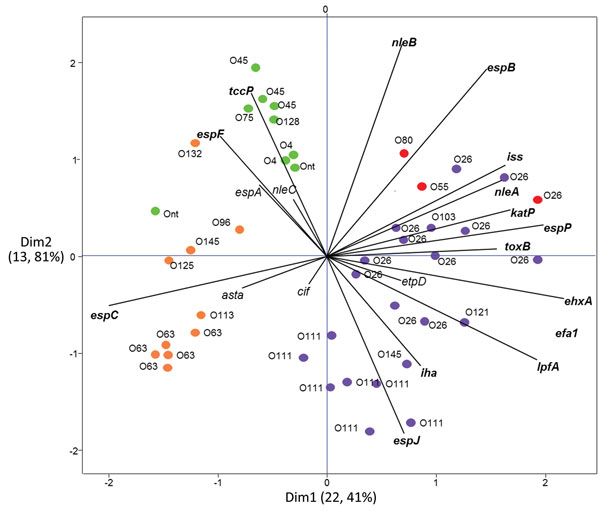Volume 22, Number 12—December 2016
Research
Whole-Genome Characterization and Strain Comparison of VT2f-Producing Escherichia coli Causing Hemolytic Uremic Syndrome
Figure 1

Figure 1. Principal component analysis of the virulence profiles of VT2f-producing verotoxigenic Escherichia coli (VTEC) strains isolated from fecal samples from human uncomplicated diarrheal case-patients (orange), human hemolytic uremic syndrome patients (red), and pigeon feces (green). Non-O157 VTEC that do not produce VT2f are indicated in purple. This analysis clusters isolates on the basis of similarities in virulence gene content. Isolates clustering together have similar virulence profiles. Lines represent individual virulence genes. The projected length of the lines on the horizontal and vertical axes indicates the strength of the contribution of a specific virulence marker to the separation of clusters. Dim1 and Dim2 represent the first 2 dimensions of the analysis and indicate the fraction of variation in the dataset that can be explained by the included variables (i.e., virulence genes).